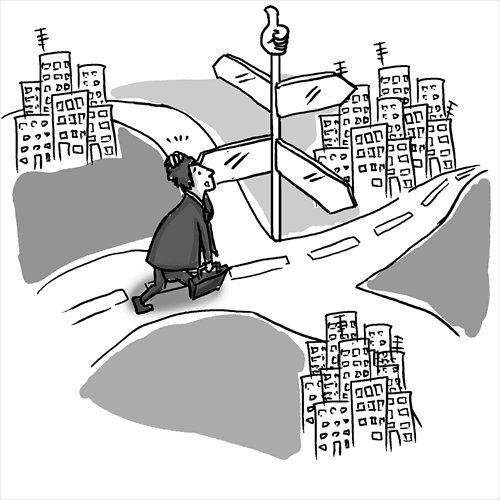HOME >> BUSINESS
Resiliency central to East Asian growth story
By Zhang Jun Source:Global Times Published: 2014-12-30 17:58:01
Chinese reforms highlight region’s ability to adapt, overcome adversity

Illustration: Lu Ting/GT
Many people are profoundly pessimistic about the Chinese economy's growth prospects, owing to the emergence of massive debt, excessive investment, overcapacity and so-called ghost cities since the 2008 global financial crisis. But these problems are not new. They have, in various forms, affected China's economy since 1978, and were evident in East Asia's other high-performing economies during their periods of rapid growth.
Nonetheless, in the 35 years since Deng Xiaoping initiated his program of reform and opening-up, China has recorded 9.7 percent average annual growth. And it took only 40 years for South Korea to complete its transition from low- to high-income status.
Economic development is a convoluted process, full of challenges and risks, successes and failures, external shocks and internal volatility. And adverse effects - such as a rising debt-to-GDP ratio and excess capacity - are inevitable.
If a country fails to respond adequately to new challenges as they arise, economic growth and development stall. Many countries in Latin America and South Asia, for example, have become mired in the so-called middle-income trap, because they failed to adjust their growth models in a timely manner.
East Asia's economies, by contrast, consistently adjusted their growth strategies and engaged in continuous institutional reform. The aim was not to tackle the problems they faced directly, but to induce new, more efficient activities that would help turn debt into assets and maximize use of the economy's capacity.
In this sense, East Asia's economies have embraced the process of creative destruction described by the Austrian economist Joseph Schumpeter, whereby the economic structure is continually revolutionized from within. Moreover, by implementing incremental reforms that facilitate - and even encourage - the replacement of old, inefficient sources of growth with new, more dynamic ones, they have expedited this process.
For example, China's productivity-enhancing agricultural reforms in the 1980s were spurred partly by growth in the nonagricultural sector, a result of policies aimed at stimulating township and village enterprises. Similarly, in the 1990s, China addressed the buildup of bad debt and unfinished construction projects - the result of State-owned enterprises' (SOEs') chronic loss-making and excessive property investment, respectively - by implementing institutional reforms that stimulated growth in more dynamic sectors, thereby offsetting the SOEs' declining return on capital.
Resilience has thus characterized the interaction between the government and markets since the introduction of Deng's reforms. Indeed, according to the late economist Gustav Ranis, the interactive dynamic of policy and market institutions was the key to the success of the East Asian economies.
This interactive dynamic is reflected in the formation of industrial policies. In China, though clusters of vibrant smaller manufacturers are flourishing, policymakers have done relatively little to promote industrial development and upgrading. This leaves it up to market institutions to guide the process, ensuring that they play a key role in the expanding industrial sectors.
Another source of resilience in East Asia are local governments. For starters, they are responsible for public capital expenditure, driving the improvement in China's physical infrastructure and yielding reasonable returns for private investors. This advances the objective of helping local businesses, particularly innovative small and medium-size firms, to grow and thrive. To this end, local governments are also helping entrepreneurs gain access to global production chains. The Zhejiang and Guangdong provinces have been particularly successful in this effort - and, unsurprisingly, rank among China's most robust regional economies.
Finally, local governments have demonstrated a willingness to support institutional innovation. This allows for the flexibility needed to address structural challenges at the local level, thereby preventing them from blocking growth.
After three years of slowing growth and rising debt, China once again finds itself at a crossroads. Fortunately, it seems to be choosing the path of flexibility and adjustment, as it pursues an ambitious reform plan that, it is hoped, will enable it to edge closer to - and eventually cross - the high-income threshold.
The author is a professor of economics at Fudan University.
Copyright: Project Syndicate, 2014.
bizopinion@globaltimes.com.cn
Posted in: Comments